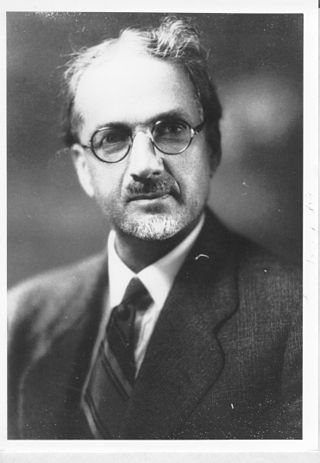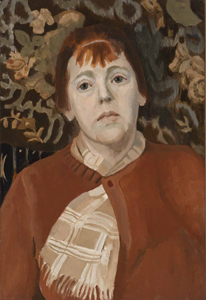
The Bowers Museum is an art museum located in Santa Ana, California. The museum's permanent collection includes more than 100,000 objects, and features notable strengths in the areas of pre-Columbian Mesoamerica, Native American art, the art of Asia, Africa, and Oceania, and California plein-air painting. The Bowers organizes and hosts special exhibitions from institutions throughout the world, and travels exhibitions nationally and internationally. The museum has a second campus two blocks south of the main site, Kidseum, a children's museum with a focus on art and archaeology. The Bowers Museum and Kidseum are located in Santa Ana 6.4 km south of Disneyland.

The Lyman Allyn Art Museum is located in New London, Connecticut, and was founded in 1926 by Lyman Allyn's daughter Harriet Upson Allyn. Its collection includes European and non-Western art as well as American fine and decorative art, 17th-century European works on paper, 19th-century American paintings, and contemporary art. The museum also conducts educational programs.

The David and Alfred Smart Museum of Art is an art museum located on the campus of the University of Chicago in Chicago, Illinois. The permanent collection has over 15,000 objects. Admission is free and open to the public.

The Mildred Lane Kemper Art Museum is an art museum located on the campus of Washington University in St. Louis, within the university's Sam Fox School of Design & Visual Arts. Founded in 1881 as the St. Louis School and Museum of Fine Arts, it was initially located in downtown St. Louis. It is the oldest art museum west of the Mississippi River. The Museum holds 19th-, 20th-, and 21st-century European and American paintings, sculptures, prints, installations, and photographs. The collection also includes some Egyptian and Greek antiquities and Old Master prints.

The Polish Museum of America is located in West Town, in what had been the historical Polish Downtown neighborhood of Chicago. It is home to numerous Polish artifacts, artwork, and embroidered folk costumes in its growing collection. Founded in 1935, it is one of the oldest ethnic museums in the United States and a Core Member of the Chicago Cultural Alliance, a consortium of 25 ethnic museums and cultural centers in Chicago.
Sandra Binion is a Swedish-American artist based in Chicago whose artistic practice includes fine-art exhibitions, multimedia installations involving, and performance art. Her work has been performed and exhibited at museums, galleries, theaters, and festivals in the US, Europe, and Japan. Some of the venues that have featured her work include the Evanston Art Center, Link's Hall, Kunstraum (Stuttgart), The Goodman Theatre, and Los Angeles Institute of Contemporary Art.

José Bernal Romero was a Cuban-American artist, born in Santa Clara, Cuba, in the former province of Las Villas. He became a naturalized U.S. citizen in 1980.

Albert Henry Krehbiel, was the most decorated American painter ever at the French Academy, winning the Prix De Rome, four gold medals and five cash prizes. He was born in Denmark, Iowa and taught, lived and worked for many years in Chicago. His masterpiece is the programme of eleven decorative wall and two ceiling paintings / murals for the Supreme and Appellate Court Rooms in Springfield, Illinois (1907–1911). Although educated as a realist in Paris, which is reflected in his neoclassical mural works, he is most famously known as an American Impressionist. Later in his career, Krehbiel experimented in a more modernist manner.
Vincent Como is a Brooklyn-based visual artist. His work is rooted in Minimalism, Conceptual Art, and Color Field Painting with a specific focus toward Black. Como has referenced the influence of Ad Reinhardt and Kasimir Malevich, as well as movements such as the Italian Arte Povera movement from the 1960s.
The Terra Foundation for American Art is a privately operated nonprofit organization dedicated to the support of American art exhibitions, projects, academic research, and publications worldwide. Its goal is to promote a greater understanding and appreciation of the cultural and artistic heritage of the United States through the acquisition, study, and display of works of American art. The Foundation is headquartered in Chicago, Illinois.

Helen S. "Reds" Torr (1886–1967) was an American early Modernist painter nicknamed "Reds" for her hair color. Torr worked alongside her artist husband Arthur Dove and friend Georgia O'Keeffe to develop a characteristically American style of Modernism in the 1920s.
Lisa Wainwright is an American art historian at the School of the Art Institute of Chicago. She previously served SAIC as the Dean of Faculty and Vice President of Academic Affairs, as well as Title IX officer for faculty. Wainwright received a Ph.D. in the history of 19th and 20th-century art, University of Illinois, 1993; an M.A. in history of 19th and 20th-century art, University of Illinois, December 1986, and a B.A. cum laude, Vanderbilt University, art history, June 1982. She also studied at the Goethe-Institut in Blaubeuren, Germany, in summer 1982.
Michiko Itatani is an American artist, based in Chicago, who was born in Osaka, Japan. After she received her BFA (1974) and MFA (1976) at the School of the Art Institute of Chicago in 1974 and 1976 respectively, she returned to her alma mater in 1979 to teach in the Painting and Drawing department. Through her work, Itatani explores identity, continuation, and finding one's way in the modern world. Her work depicts nude figures in an expressionist style. Itatani has received the Illinois Arts Council Artist's Fellowship, the National Endowment for the Arts Fellowship and the John Simon Guggenheim Fellowship. Her work is collected in many museums, including the Art Institute of Chicago; the Museum of Contemporary Art, Olympic Museum, Switzerland; Villa Haiss Museum, Germany; Musée national des beaux-arts du Québec, Canada; Museu D'art Contemporani (MACBA), Spain; and the National Museum of Contemporary Art, South Korea.

Corey Postiglione is an American artist, art critic and educator. He is a member of the American Abstract Artists in New York, and known for precise, often minimalist work that "both spans and explores the collective passage from modernism to postmodernism" in contemporary art practice and theory. New Art Examiner co-founder Jane Allen, writing in 1976, described him as "an important influence on the development of contemporary Chicago abstraction." In 2008, Chicago Tribuneart critic Alan G. Artner wrote "Postiglione has created a strong, consistent body of work that developed in cycles, now edging closer to representation, now moving further away, but remaining rigorous in approach to form as well as seductive in markmaking and color."

Rodney Carswell is an American abstract artist. He first gained recognition for human-scaled, geometric paintings that feature exposed, projected support structures, creating interplay between sculptural presence and richly painted pictorial surfaces. His recent paintings eschew the superstructures and evoke a greater sense of immediacy, playfulness, and narrative. Critics often describe Carswell's work as uncanny, elusive or quirky, for its tendency to negotiate "in-between" spaces and embrace contradictions such as order and instability, intention and accident, or back and front. Employing irregularly shaped canvasses, thick supports, and openings or holes that reveal the stretcher construction and walls behind them, works like 3 (1994) often occupy a place between painting and sculpture. In a similar way, Carswell uses the modernist languages of Minimalism, Suprematism and Constructivism, yet eludes those categories with postmodern allusions to architecture, the body and spiritual iconography, and with his process-oriented, "hand-made" surfaces. In his essay for Carswell's mid-career retrospective at Chicago's Renaissance Society, Los Angeles Times critic David Pagel suggested that his understated paintings worked their way into one's consciousness in a "supple, somewhat unsettling manner" that achieves a subtle, but lingering shift in perception.
Sam Himmelfarb was a Russian Empire-born, American artist and commercial exhibit designer, known for his modernist-influenced paintings of everyday people and urban scenes. He also designed the Frank Lloyd Wright-inspired Samuel and Eleanor Himmelfarb Home and Studio in Winfield, Illinois, which is listed on the National Register of Historic Places. Himmelfarb studied art at the Art Students League and National Academy of Design in New York and at the Wisconsin School of Fine and Applied Arts. He initially painted in a realist style influenced by the Ashcan School, which gave way to more modernist, increasingly abstract styles. His paintings appeared in exhibitions at the Art Institute of Chicago (AIC), Terra Museum of American Art, Milwaukee Art Institute, and Arts Club of Chicago, and in circulating shows from the American Federation of Arts, among other venues. He received awards from the AIC, Wisconsin State Fair and Milwaukee Art Museum, and his work belongs to the collection of the latter, and those of the Illinois State Museum, Block Museum, and Arkansas Art Center, among others. Himmelfarb was married to the artist and educator, Eleanor Himmelfarb (1910-2009); their son, John Himmelfarb, and grandchild, Serena Aurora Day Himmelfarb, are also artists.

Charles C. Dawson was an American painter, printmaker, illustrator, and graphic designer.

Eleanor Gorecki Himmelfarb was an American artist, teacher and conservationist known for semi-abstract paintings that reference the landscape and human figure, and for her work protecting woodlands in DuPage County, Illinois. She studied art history and design at the University of Chicago, natural history at the Morton Arboretum, and fine art at the Art Institute of Chicago and University of Illinois at Chicago. Critics characterize Himmelfarb as a modernist, who explored her subjects metaphorically through complex rhythmic compositions, stylized forms, and subtle coloration. Her work was featured in solo shows at the Evanston Art Center (retrospective), University Club of Chicago and Sioux City Art Center, and group exhibitions at the Art Institute of Chicago, Chicago Cultural Center, and Renaissance Society. Himmelfarb taught painting and design for four decades at several institutions, including over 30 years at the DuPage Art League. She was married to the painter, Sam Himmelfarb, and helped him design their house, the Samuel and Eleanor Himmelfarb Home and Studio in Winfield, Illinois, which is listed on the National Register of Historic Places. Their son, John Himmelfarb, and grandchild, Serena Aurora, are also artists. Himmelfarb died at age 98 in Winfield in 2009.

Frank Piatek is an American artist, known for abstract, illusionistic paintings of tubular forms and three-dimensional works exploring spirituality, cultural memory and the creative process. Piatek emerged in the mid-1960s, among a group of Chicago artists exploring various types of organic abstraction that shared qualities with the Chicago Imagists; his work, however relies more on suggestion than expressionistic representation. In Art in Chicago 1945-1995, the Museum of Contemporary Art, Chicago (MCA) described Piatek as playing “a crucial role in the development and refinement of abstract painting in Chicago" with carefully rendered, biomorphic compositions that illustrate the dialectical relationship between Chicago's idiosyncratic abstract and figurative styles. Piatek's work has been exhibited at institutions including the Whitney Museum, Art Institute of Chicago, MCA Chicago, National Museum, Szczecin in Poland, and Terra Museum of American Art; it belongs to the public art collections of the Art Institute of Chicago and MCA Chicago, among others. Curator Lynne Warren describes Piatek as "the quintessential Chicago artist—a highly individualistic, introspective outsider" who has developed a "unique and deeply felt world view from an artistically isolated vantage point." Piatek lives and works in Chicago with his wife, painter and SAIC professor Judith Geichman, and has taught at the School of the Art Institute of Chicago since 1974.
Shona Macdonald is a Scottish artist and academic. She is Professor of Art at the University of Massachusetts Amherst.













